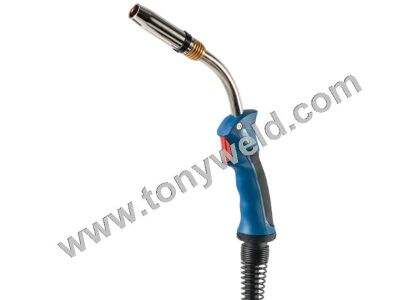Hello, my friends! The subject we're going to cover today is kind of special- plasma cutting electrodes and nozzles! Have You Ever Seen A Plasma Cutter In Action? It's pretty bitchin' little machine, cuts through the metal as if the machine itself is coated with Teflon by using an incredibly hot plasma torch. When you see it work, it kind of seems magic! But did you know that the type of electrode and nozzle paired with a plasma cutter will significantly affect how well it cuts? These segments are extremely essential for the slicing task to be effective. Let's dig in to these tools and their significance!
This information is current and valid up to October 2023.
First, plasma cutting electrodes and nozzles play the most important functions in plasma miller torch cutters. So now, let's consider the electrode and what is taking place there. It is like a hot stream of energy known as a plasma arc that cuts through metal. Well to consider it, it is rather like a lightning bolt, much too powerful! The other major part is the nozzle. This focuses the arc and directs the flow of gas. The electrode along with the nozzle produces a plasma arc that can cut through metal and other material. They are crucial for an effective plasma cutter.
The Significance of Selecting an Ideal Electrode
Top 5 Best Plasma Cutting Electrodes: (Handpicked by Experts) The correct one for your plasma cutter makes all the difference. Electrodes can be categorized into three categories: copper, hafnium, and tungsten. Each type has its own set of characteristics. Copper electrodes are the most common ones with good performance for most cutting jobs. They're very good for casual use, but they do have a major downside, they wear out very quickly. That means if you use them a lot you would need to keep replacing them regularly.
Conversely, hafnium electrodes offer very sharp cutting. In fact, they can be useful in making cleaner cuts but they cost more money. Lastly, there is the tungsten electrode. These are known to be very long-lasting and, being typically cheaper than a hafnium electrode, many people employ them for their cutting jobs. But, before you can pick the right electrode, you need to think about what you need.
They are equipped with different designs of nozzles for better cutting.
Like electrodes, nozzles need to be an assortment of models to fit any given cutting needs. Familiarization with these kinds of designs could guide you towards the best suitable design for any job. Some narrow nozzles are pretty useful for incredibly precise cuts that would be much needed for close attention work while elongated kinds are best cut through materials whose surfaces are irregular, such as scrap metal, or other products with bumps all over.
We have shielded and unshielded nozzles. The masked welding nozzle further allow the operation of still-on items; this saves more cutting energy due to the way energy is dissipated into the metal. It may also affect the quality of the cut, too. And last, we have these others: we have inline and off-axis nozzles. This models change the plasma arc form and direction as well. Getting to know those will help you pick the best nozzle for a given cutting scenario.
Selecting an Electrode for Your Material
The right electrode for the job – matching your plasma cutter with the material you are cutting Different materials need different electrodes to work at their best. Copper electrodes, for example, are used to cut metals like aluminum and steel. They are effective but do keep in mind that they wear out much quicker. Hafnium electrodes are more suited for this, but are much better when cutting more complex metals, such as stainless steel. This is important to note because the wrong electrode will give you rough cuts, or you can damage the metal you are working on. Selecting the best electrode will enable you to make clean, accurate cuts each time.
How to Maintain Your Plasma Cutting Equipment
A well-maintained plasma cutting electrodes and nozzles ensure the enhancement of their lifespan as well as performance. In short, this means you have to check them occasionally for dirt and wear. Check your lenses for signs of damage or dirt — if you find any, be sure to clean them right away. Cleaning them regularly makes them work better and prevents problems. They can be cleaned by gently wiping away the dirt and debris using a cloth.
It is also important, of course, not to touch the electrodes and welding nozzle-2 with your bare hands: We risk damaging their surfaces and reducing their effectiveness. Remember, do not touch them directly; use tools or gloves to pick them up instead." If you are taking good care of your plasma cutting tools, you will be sure that they will serve you well for a long time with proper maintenance.
Overall, understanding the different types of plasma cutting electrodes and nozzles is pretty important if you want to cut better. Choose the right electrode and nozzle for the job, and take care of them, then you will have an excellent cutting experience every time. Tonyweld has plenty of plasma cutting electrodes & nozzles for your needs. Please don't hesitate to reach out today if you have any questions or would like to learn more about these tools!

 EN
EN







































